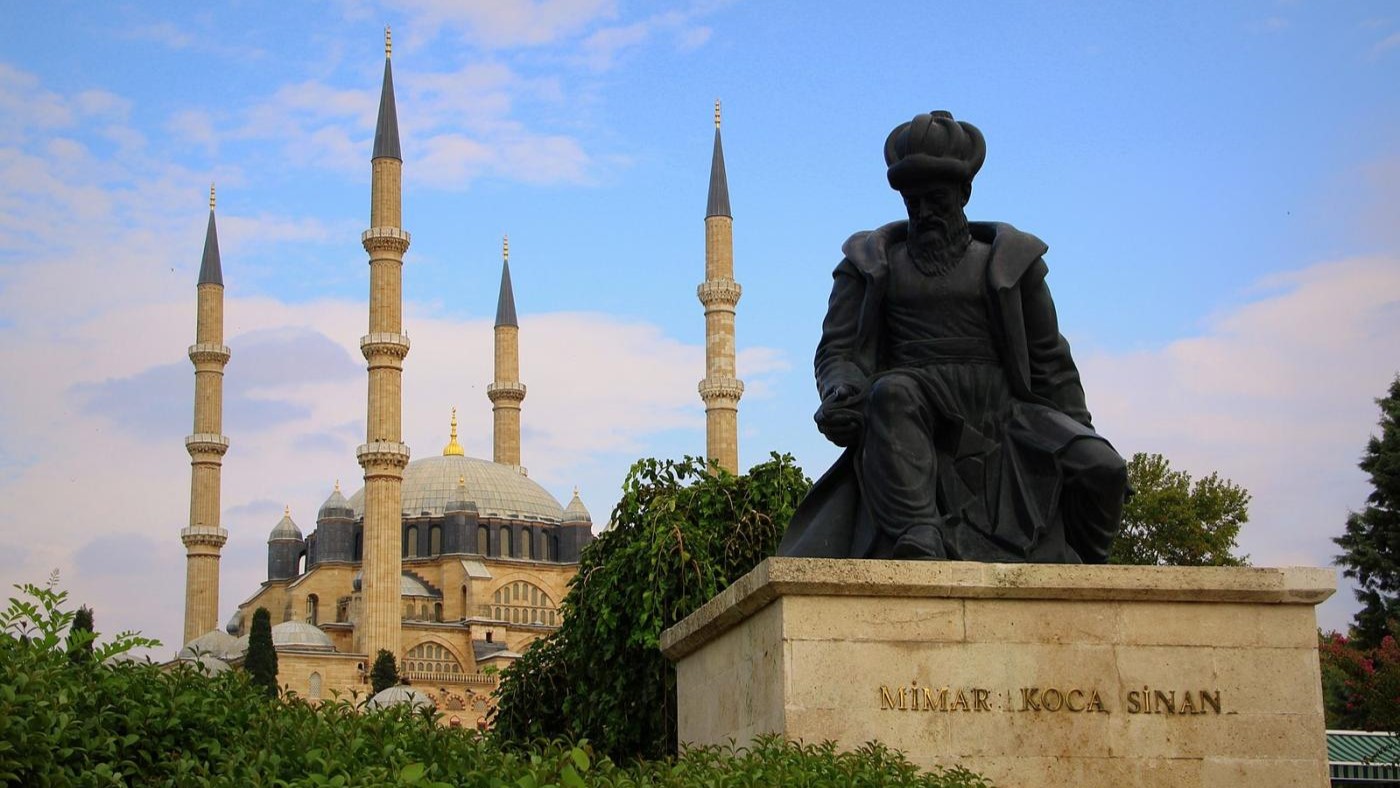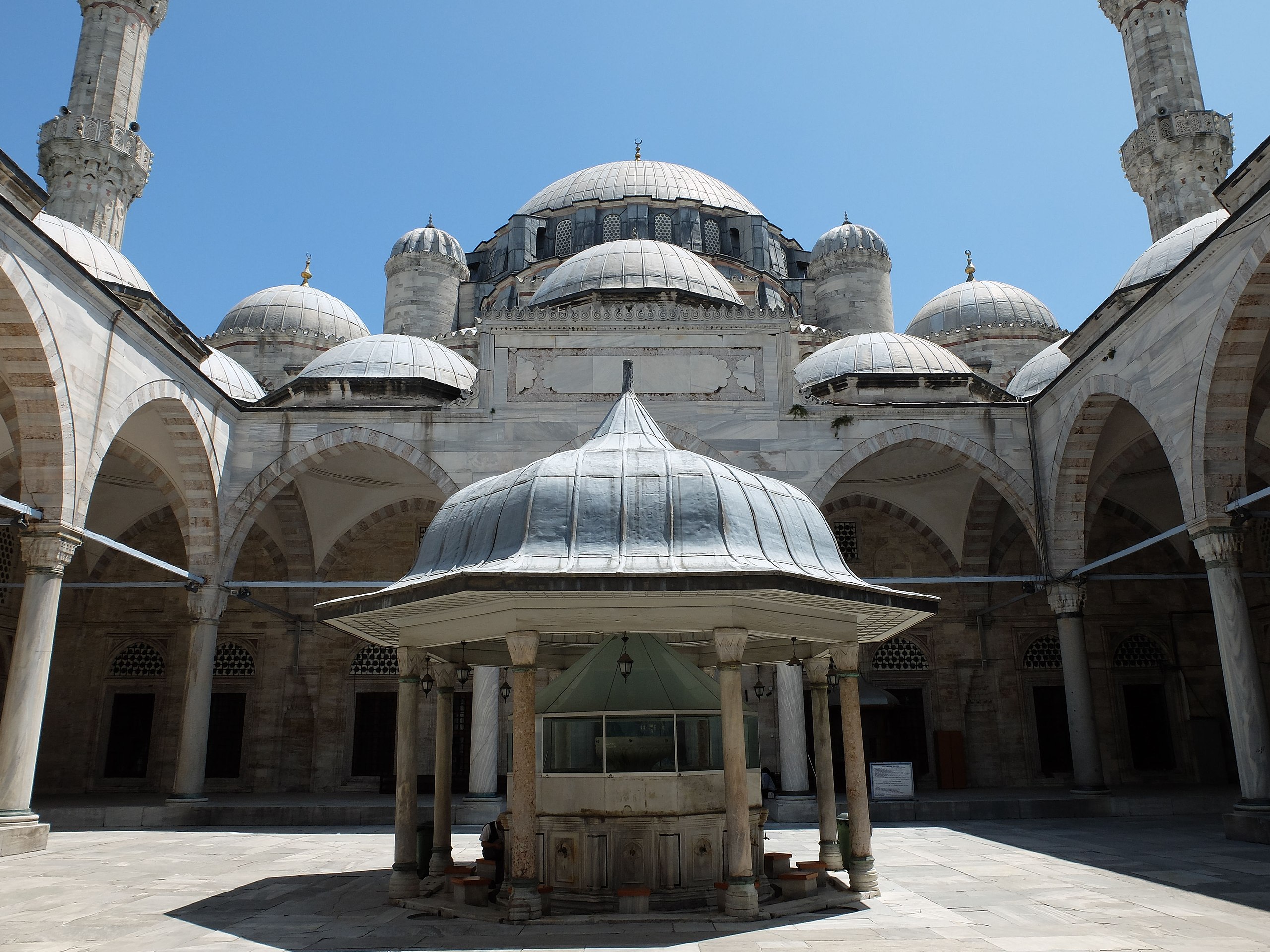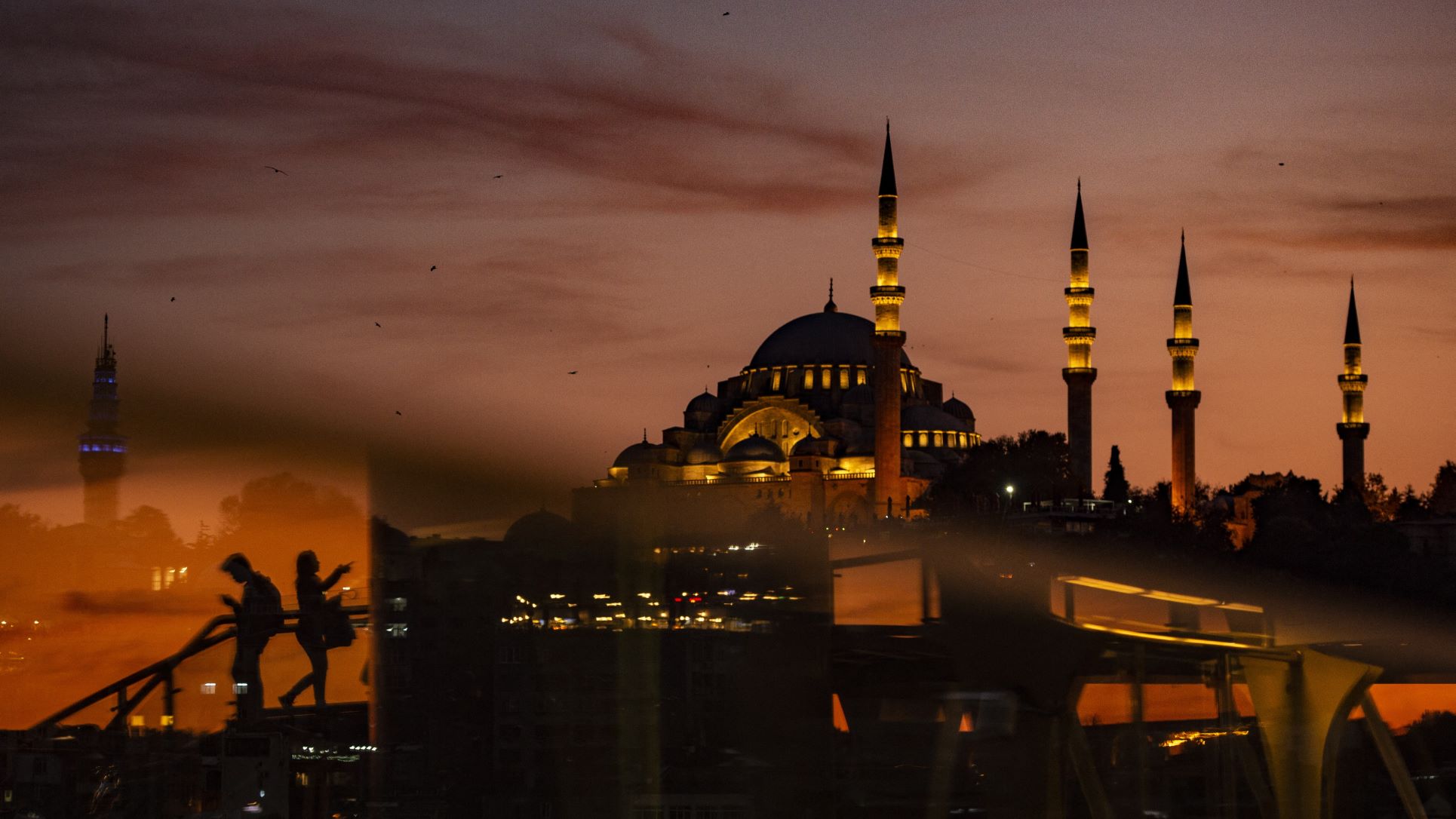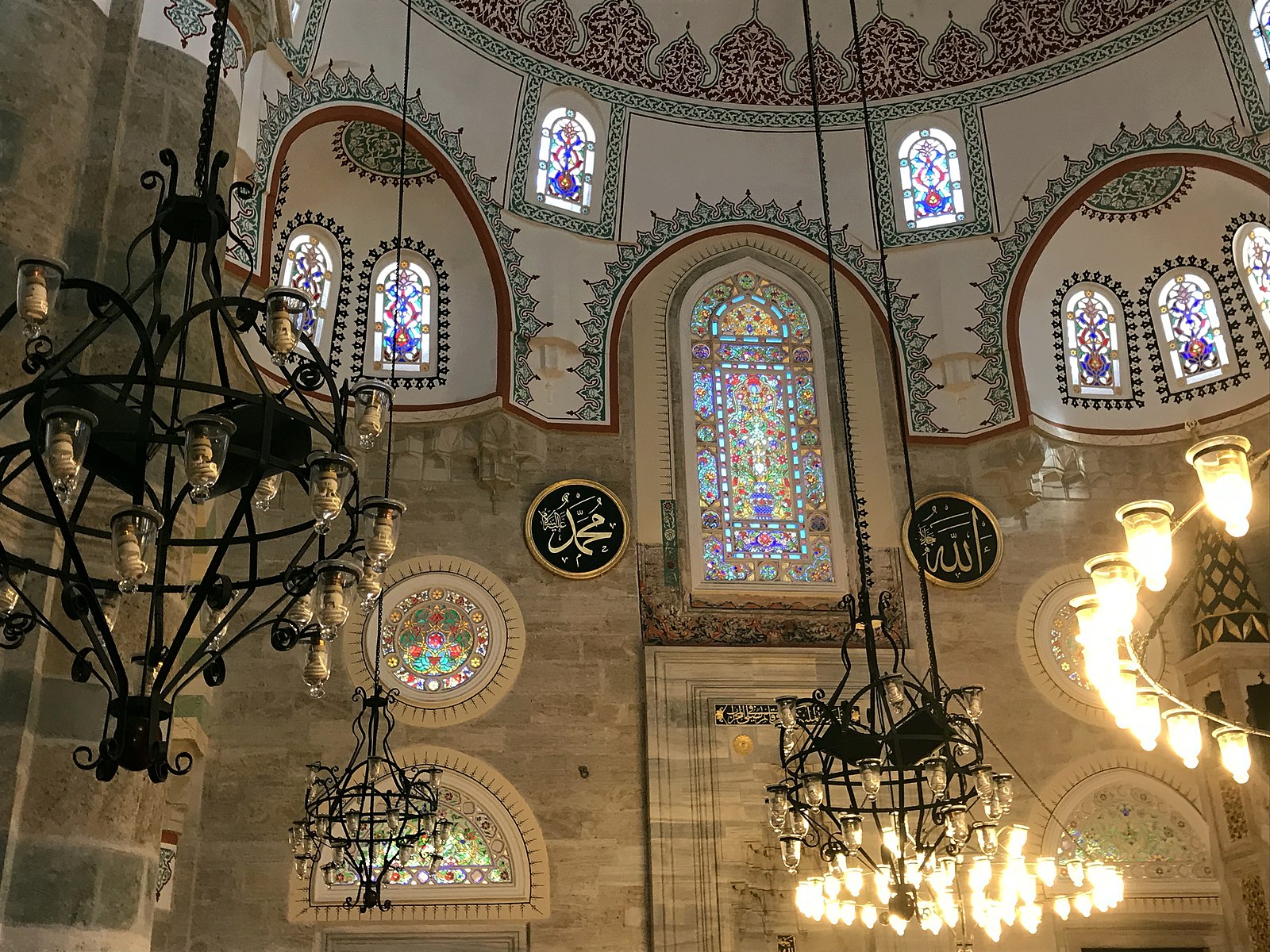Modern cities are often recognizable by their skyscrapers, such as the Burj Khalifa in Dubai or The Shard in London. That is not the case in Istanbul, where it is the mosques that define the city skyline.
This is largely due to the efforts of a 16th century architecte century that built some of Istanbul’s most iconic buildings and established a unique Ottoman architectural style.
During his long career, Mimar Sinan completed more than 300 buildings across the Ottoman Empire, which during his lifetime stretched from Algiers in the west to the Caspian coast of Azerbaijan in the east, from Hungary in the north to the Muslim holy city of Mecca in the east the south
His architectural achievements are not limited to mosques, although those are his most memorable buildings. He also built schools, public kitchens, palaces and bridges.
His architectural legacy is not limited to his own works either. As chief architect of the Ottoman Empire, he trained generations of builders and was dispatched throughout the empire as a consultant on various projects.
Born around 1489 in the Kayseri region of central Anatolia, Sinan probably came from a Christian family of Armenian or Greek origin and his first name was probably Joseph before he adopted the name Sinan after his conversion to Islam later in his life.
The life of a janissary
Details regarding the early years of his life are sketchy and subject to speculation among researchers. It is estimated that Sinan’s father was a mason and carpenter, which may explain his later career choice.
During his adolescence, Sinan participated in the devchirmé, a system of recruitment for the sultan’s armies that consisted of requisitioning boys aged 8 to 18 from the Christian populations of the Balkans and Anatolia and training them, once converted to Islam, to to turn them into bureaucrats or military officers who would join the body of janissaries.
It was in that elite military division, where he served as a military engineer, that Sinan’s qualities as a builder were noted.
A gifted fighter, Sinan utilized his knowledge of architecture by pointing out flaws in enemy structures and developing plans of attack aimed at exploiting those weaknesses.
His prowess on the battlefield and his skills as a builder caught the attention of the Ottoman superiors, who pushed him up the ranks and gave him greater responsibilities.
One of his tasks was the demolition of unauthorized buildings in Cairo after the Turkish conquest of Egypt and their replacement with new structures.
The honorific title “Mimar” simply means architect in Turkish.
His achievements include the Mustafa Pasha Bridge in Bulgaria and mosques across the newly conquered Ottoman lands.
Sinan also designed ships capable of transporting goods and soldiers across the then expanding empire.
At the core of his designs were complex mathematical equations aimed at distributing the great weight of raw materials throughout the structures and ensuring the durability of buildings in an earthquake-prone region.
In 1539, Sinan became the chief architect of the Ottoman Empire, a development that would forever change Istanbul’s skyline and give it a distinctly Islamic character after centuries of Byzantine rule.
Imperial and Islamic grandeur
One of Mimar Sinan’s first mosques was the Şehzade Mosque, located in the Fatih district of Istanbul. It was built in honor of Mehmet, eldest son of Sultan Suleiman Ierdied at the age of 21. The Ottoman sultans used the term of Persian origin “Şehzade”, which means “son of the Shah”, to indicate their sons.
The mosque is characterized by its large courtyard, two madrasahs, a public kitchen and a central dome surrounded by four semi-domes.
The interior of the building is distinguished by a high ceiling decorated with Islamic calligraphy and intricately patterned tiles.
The Şehzade Mosque, described by Sinan as his “apprentice”, provides insight into his architectural philosophy and is a blueprint for his future projects.
Taking inspiration from the early rulers of Istanbul, the Byzantines, Sinan created open spaces that encouraged the gathering of large numbers of devotees, in harmony with Islam’s emphasis on communal prayer. These also carried sound more easily, so that the imam and muezzin could be heard as far away from the pulpit as possible.
The mosque further has slender, tall minarets which, without diminishing their primary function, functioned as a statement of imperial and Islamic grandeur.
Aesthetics was also an essential concern for Sinan and the different architectural elements – domes, calligraphy, open spaces and auxiliary structures such as minarets – fit together harmoniously.
Requiring the work of more than a thousand workers, the buildings also represented an affirmation of the power and wealth of the Ottoman Empire.
Among other Islamic places of worship designed by Sinan in Istanbul is the Süleymaniye Mosque, located near the Şehzade Mosque and one of the largest buildings in the city.
Sinan and his patron Soliman are buried in mausoleums in the complex.
Another Islamic place of worship designed by Sinan is the Mihrimah Sultan Mosque in the Üsküdar district of Istanbul, on the Bosporus coast of Asia.
It was built in the 1540s in honor of Princess Mihrimah, the daughter of Soliman, who died in 1578, who is buried there.
Outside Istanbul, Sinan is the architect of the Selimiye Mosque in the European city of Edirne; it is considered one of his masterpieces.
An inheritance
Sinan’s work is the archetype of the Ottoman architects who succeeded him.
The Blue Mosque of Istanbul, also known as Sultan Ahmet Mosque, was built by one of Sinan’s apprentices, the Ottoman architect Sedefhar Mehmet Ağa.
He is also believed to have influenced the design of the Taj Mahal through some of his students who traveled to India to participate in its construction.
The influence of Sinan is not limited to the Islamic world and can be observed even in Europe.
One of London’s most famous buildings, St. Paul’s Cathedral, was designed by Sir Christopher Wren, an architect deeply impressed by Ottoman architecture who sought to incorporate elements of oriental styles in his own designs.
The cathedral, which includes a dome, is flanked by towers vaguely reminiscent of Islamic minarets.
Since his death in July 1588, Sinan’s legacy has continued to dazzle visitors.
In addition to his best-known accomplishments, he helped design sewer systems and oversaw the repair of existing structures. Sinan even participated in the design of his own tomb.
Today, he lends his name to the Mimar Sinan University of Fine Arts, Turkey’s first art school. Located on the European side of the Bosphorus in Istanbul, next to the Mihrimah Sultan Mosque, it enjoys a view of Süleymaniye in the distance.




